In this article I will tell you about my secrets of growing pepper seedlings. In order to get strong and healthy seedlings, and therefore a good harvest, it is important to create favorable conditions for young peppers, since pepper is a heat-loving and environmentally demanding crop that is not so easy to grow
|
Not everyone succeeds in such seedlings |
But in addition, there are a number of techniques that I use, and thanks to which I get very good yields of this wonderful crop.
| Content:
|
Where to start?
You should always start with preparing the soil.
It is very important to choose the correct composition of the soil mixture. It should be fertile and light. A very simple and reliable soil mixture consisting of 3 parts aerated peat, 2 parts humus and 1 part turf soil. If you do not have turf land, then collect soil from the forest or forest plantations.
To a bucket of these mixtures you need to add a half-liter jar of sand, 3-4 tbsp. spoons of ash, 1 tbsp. a spoonful of superphosphate, 1 teaspoon of urea and mix everything thoroughly. If there is such a possibility, then it is advisable to add 2-3 glasses of vermicompost to the prepared mixture. Then, to combat blackleg, this mixture should be poured with a warm solution of “Rizoplan” or a strong solution of potassium permanganate. In such soil, pepper seedlings grow strong and healthy.
If you use fresh, non-blackened sawdust to prepare the soil mixture (which is extremely undesirable), then you must first pour boiling water over it 2-3 times to wash off the resinous substances.
Seed preparation
Of the many schemes for pre-sowing preparation of pepper seeds for sowing, the following two schemes are most preferable:
- Treating the seeds in a 1.5% solution of potassium permanganate for 20 minutes, then soaking them for 18 hours in a Zircon solution (1 drop of the drug per 300 ml of water). Then sowing or preliminary germination of seeds followed by sowing.
- Disinfection of seeds in a 1.5% solution of potassium permanganate for 20 minutes, then soaking them for 18 hours in Epin solution (2 drops per half glass of water). Then sowing the seeds or pre-germinating them followed by sowing.
Both options are approximately equivalent. If you have Zircon, soak it in Zircon; if you have Epin, soak it in it.
When to sow pepper seedlings
The sowing time depends on the time of planting the plants in a permanent place. When growing early-ripening varieties, they usually sow 65 days before, mid-season - 65-70 days, and if you grow late-ripening varieties, then 75 days before planting in a permanent place. It is desirable that by the time the seedlings are planted in the ground, the plants will bloom and even have ovaries.
How to grow pepper seedlings
No lighting required for seed germination, so the container (school) with the sown seeds can be placed in any warm place. As soon as the first sprouts appear, the container with the seedlings must be moved to a bright place. Reduce the temperature to 15 degrees, which will prevent stretching.
|
When all the seedlings straighten up, the temperature is increased to 23...25 degrees, while reducing it at night to 18 degrees. You should know that the growth of seedlings stops at 12...14 degrees. |
Is it better to use boxes or cups?
The classic recommendation for growing pepper is that the seeds are planted in a common container at a distance of 5 cm, and when two true leaves appear, they are planted in separate pots. I immediately grow seedlings in separate pots.
Why am I doing this? Pepper plants have a very sensitive root system that is difficult to tolerate injury. When picking (plant replanting), inevitable injury to the roots occurs.Such plants are almost 2 weeks behind in development from those that grew without transplantation.
It is better to grow peppers without picking.
Temperature
Peppers require high soil temperatures to germinate:
- at + 28-32°C shoots appear 4-7 days after sowing
- at + 24-26°C shoots will appear on day 14-15
- at 21-22°C- for 20-21 days
- and at + 20°C - will not appear at all, but even at temperatures above 40°C – they won’t appear either.
Do you need backlighting?
Needed. It is necessary to provide plants with good lighting with fluorescent lamps, which are placed 5-7 cm above the plants and turned on for 12-15 hours a day and then they can be sown in early February, or sown at a later date, when there is enough sun - for us this is the beginning of March.
|
Pepper is very demanding of light, especially at a very early age. |
How to water
Water the seedlings every 5-6 days with warm, settled water. The water temperature must be 25-28 degrees. If you water with cold water, the root system experiences severe stress. Water at the root, avoiding water getting on the stem, so that the entire earthen lump gets wet.
Top dressing
Fertilizing should begin as soon as the cotyledon leaves open.
It is best to water not with water, but with a weak solution of liquid fertilizer “Uniflor - Bud”, which contains an increased dose of potassium, which pepper needs because it is a potassium lover.
To do this, dissolve 2 teaspoons of fertilizer in 5 liters. water. First, pour 1 teaspoon under each plant every other day, then gradually increase the dose, while the soil should be moderately dry all the time. The solution can stand indefinitely.
Good results are obtained by fertilizing with fertilizer "Kemira - universal" - 1 tbsp. spoon on a bucket of water.
Pepper also loves foliar feeding with humates and ash: 1 tbsp. ash on a bucket of water. Take this into account when growing seedlings.
Picking
If you grow seedlings in boxes, you will have to pick them.
|
Do not rush to pick up seedlings: they tolerate transplanting more easily in the phase of 3-4 true leaves. The most important thing is not to damage the root system. |
First of all, water the seedlings thoroughly. Fill the prepared containers with soil, compact it, water it well, make a funnel and carefully lower the seedling into it so as not to bend or damage the root. Under no circumstances should its central root be shortened.
Planted at the same depth at which it grew. Now you need to carefully squeeze the soil around the plant. For the first 2-3 days, the pepper does not need to be illuminated.
To grow good seedlings, it is best to initially sow pepper seeds in separate 1-liter containers and not touch them until planted in a greenhouse or garden bed
Should I pinch out pepper seedlings?
Pinching the main stem above the fifth to eighth leaf (before budding) is an important step when growing peppers. This activates the growth of side shoots, which produce many fruits, and their yield increases by 30%.
|
In order for the bushes to have more side shoots in the future, the seedlings must be pinched. |
At the same time, the number of ripe fruits during the first simultaneous harvest increases by 2 times and reaches 70% of the total harvest. In addition, the spreading bush shades the soil and lower parts of the stem, which reduces their overheating and reduces the withering of plants.
Hardening
Before planting in the ground, the grown seedlings are hardened off, gradually accustoming them to sunlight, wind, and lower temperatures, for which the plants are briefly taken out onto the balcony or a window is opened.Gradually, the time the plants stay in direct sunlight is increased. The temperature during hardening should not be lower than 15ºand there should be no drafts.
Planting in open ground
By the time of planting in the ground, pepper seedlings should have 8–12 leaves.
By the time of planting, the average daily temperature should be 15 - 17°C. The threat of spring frosts should have passed by this time. The soil temperature at the planting depth should be at least 10 - 12°C.
|
Planting seedlings in open ground too early is dangerous because cold weather inhibits the growth and development of plants and increases the likelihood of diseases. In addition, peppers do not tolerate frost well. |
Pepper seedlings intended for growing in a greenhouse are planted in the ground from May 1 to May 15. They are planted in open ground between May 10 and 30, and must be covered with film.
The most common mistakes when growing peppers from seedlings
- Failure to comply with temperature conditions. In order for pepper seeds to germinate, the soil must always be moist and the germination container must be at a temperature of +24-28. Another common mistake gardeners make is that we like to place containers above (or even on!) radiators. And the boxes are usually small, the soil in them dries out instantly. Young shoots die in dry soil!
- Sowing with further picking. Pepper has a very sensitive root system; it has difficulty restoring it. Therefore, it is much better to sow the seeds separately in cups approximately 10x10 cm. Without picking, the seedlings will be ready 2 weeks earlier.
- No backlight. For full development of plants, a daylight length of more than 12 hours is needed.Therefore, additional illumination is necessary, especially at an early stage (in March), when the days are still short.
- Growing in shaded areas. Pepper does not like shade at all and stretches out greatly, which will then affect the harvest. The buds will fall off.
- Incorrect watering. Pepper does not tolerate drying out of the earthen clod; irregular watering subsequently causes the buds to fall off.
- Pests. The main pests that can damage seedlings are aphids, mites, cutworms. If you notice them when they first appear and immediately treat the pepper, then massive spread can be prevented.
It is necessary that only clean, healthy plants are planted in the ground. At home, we spray the seedlings with infusions: onion or onion skins, marigolds, garlic, pine extract, calendula.
What does pepper like?
- Light, fertile, loamy soils with a neutral or slightly acidic reaction.
- During the growth period, it needs good lighting.
- Pepper seedlings like frequent, not abundant watering with lukewarm water (24-25 degrees).
- It needs increased doses of potassium fertilizers.
In addition, it prefers warm (18-24 degrees) soil and warm (about 25 degrees) air. The optimal temperature for growing seedlings is 22-28 degrees. When it drops to 15 degrees, pepper stops developing.
What peppers don't like
It does not tolerate the slightest damage to the roots, and therefore pepper seedlings do not tolerate transplantation well., especially at an early age. He doesn't like either deepening during transplants.
To him contraindicated clay, acidic soil, peat, fresh manure and excess nitrogen, increased doses of mineral fertilizers, thickened plantings, high (above 35 degrees) and sudden changes (more than 15 degrees) temperatures in the greenhouse, watering with cold water (below 20 degrees), direct sun at noon.
Early varieties of pepper
We bring to your attention a selection of early ripening pepper hybrids with very high yields. Selected hybrids are resistant to major fungal and viral diseases. Large fruits with thick walls have unsurpassed taste.
KALOTA F1 — 60 days from planting seedlings. For unheated greenhouses and open ground. Friendly return of early harvest. The plant is medium-sized, the fruits weigh 170 g, conical, white, of excellent quality. Good resistance to viral diseases.
MACABI F1 — 65 days from planting seedlings. Recommended for growing indoors and outdoors. The fruits are 3-4 chambered, beautiful elongated cuboid in shape, measuring 9x12 cm, weighing up to 350 g, ruby red when fully ripe. Fleshy, juicy and sweet pulp, wall thickness up to 10 mm. High resistance to a number of diseases.
The fruits are very well protected from sunburn. High yield potential.
TELESTAR F1 - ripening 60 days after planting. A plant with large cube-shaped fruits, 10x10 cm in size, weighing up to 250 g, with a wall thickness of 9 mm, rich red in color when fully ripe. Very concentrated yield. Cultivation in open and protected ground. High resistance to a number of diseases.
VEDRANA F1 - ripening 55 days after planting seedlings. The fruits are smooth, 8x10 cm in size, wall thickness up to 7 mm, from white to light red. The plant adapts well to different climatic conditions. Recommended for growing in all types of greenhouses, as well as in open ground. The hybrid is resistant to blossom end rot.
LOTTA F1 — 55-60 days after disembarkation. Hybrid with high fruit set intensity. Dense, thick-walled, cone-shaped fruits from light green to red.Fruit size 7x14 cm, wall thickness up to 5 mm, average fruit weight 110-120 g. For cultivation in film greenhouses and open ground. Resistant to viral and bacterial diseases.
ANETTA F1 - the earliest (after 55 days from planting the seedlings begin to turn red). Friendly return of early harvest. The plant is medium-sized, fruits weighing up to 130 g, wall thickness 6 mm, conical shape 9x12 cm, excellent quality. Good resistance to viral diseases.
Continuation of the topic:
- What can pepper seedlings get sick with and how to treat it
- How to care for bell peppers in a greenhouse
- Technology for growing peppers in open ground
- Why do pepper leaves turn yellow?
- How to properly feed peppers
- What to do if pepper leaves curl
- Pepper diseases and methods of treating them
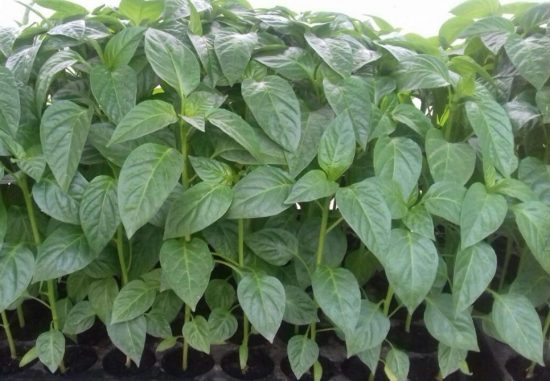

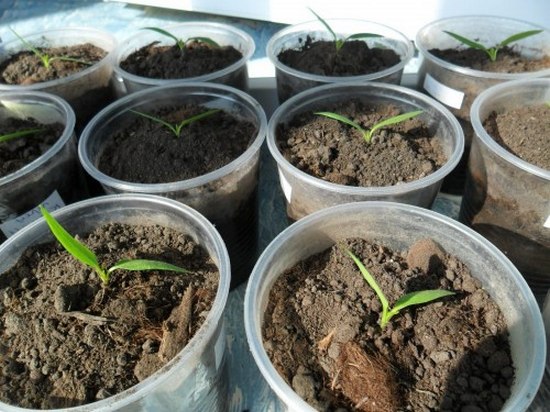
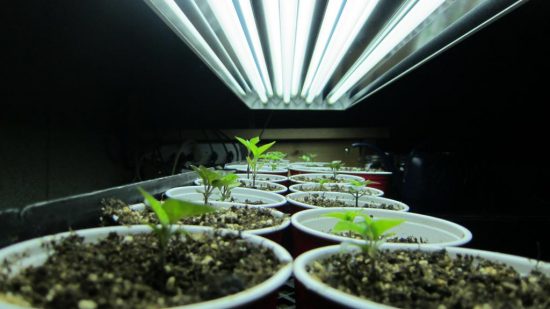
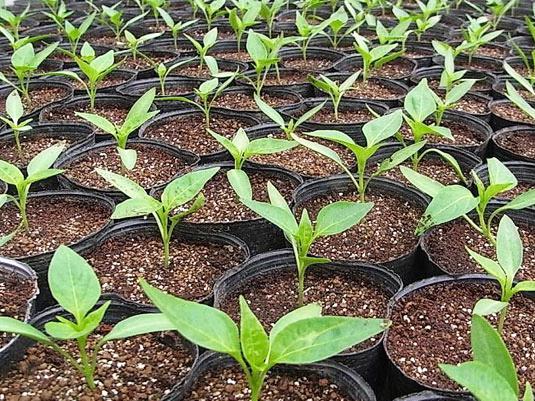
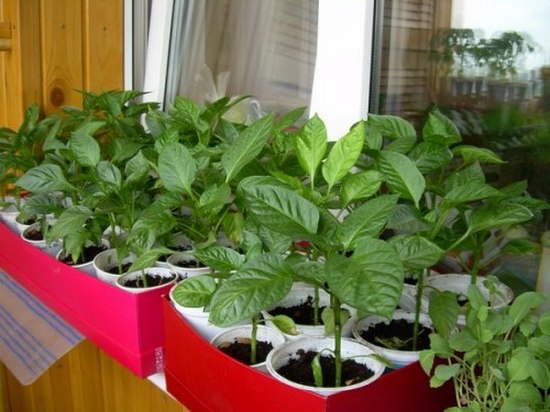
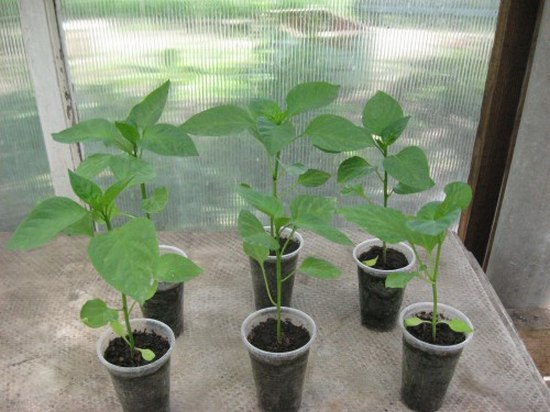


 (3 ratings, average: 4,33 out of 5)
(3 ratings, average: 4,33 out of 5) CUCUMBERS NEVER GET SICK, I'VE BEEN USING ONLY THIS FOR 40 YEARS! I SHARE A SECRET WITH YOU, CUCUMBERS ARE LIKE THE PICTURE!
CUCUMBERS NEVER GET SICK, I'VE BEEN USING ONLY THIS FOR 40 YEARS! I SHARE A SECRET WITH YOU, CUCUMBERS ARE LIKE THE PICTURE! You can dig a bucket of potatoes from each bush. Do you think these are fairy tales? Watch the video
You can dig a bucket of potatoes from each bush. Do you think these are fairy tales? Watch the video
 How our fellow gardeners work in Korea. There is a lot to learn and just fun to watch.
How our fellow gardeners work in Korea. There is a lot to learn and just fun to watch. Eye trainer. The author claims that with daily viewing, vision is restored. They don't charge money for views.
Eye trainer. The author claims that with daily viewing, vision is restored. They don't charge money for views. A 3-ingredient cake recipe in 30 minutes is better than Napoleon. Simple and very tasty.
A 3-ingredient cake recipe in 30 minutes is better than Napoleon. Simple and very tasty. Therapeutic exercises for cervical osteochondrosis. A complete set of exercises.
Therapeutic exercises for cervical osteochondrosis. A complete set of exercises. Which indoor plants match your zodiac sign?
Which indoor plants match your zodiac sign? What about them? Excursion to German dachas.
What about them? Excursion to German dachas.
Thank you! I found a lot of useful information from you for a beginner.
I am very glad that the article was useful to you. Come visit us again.